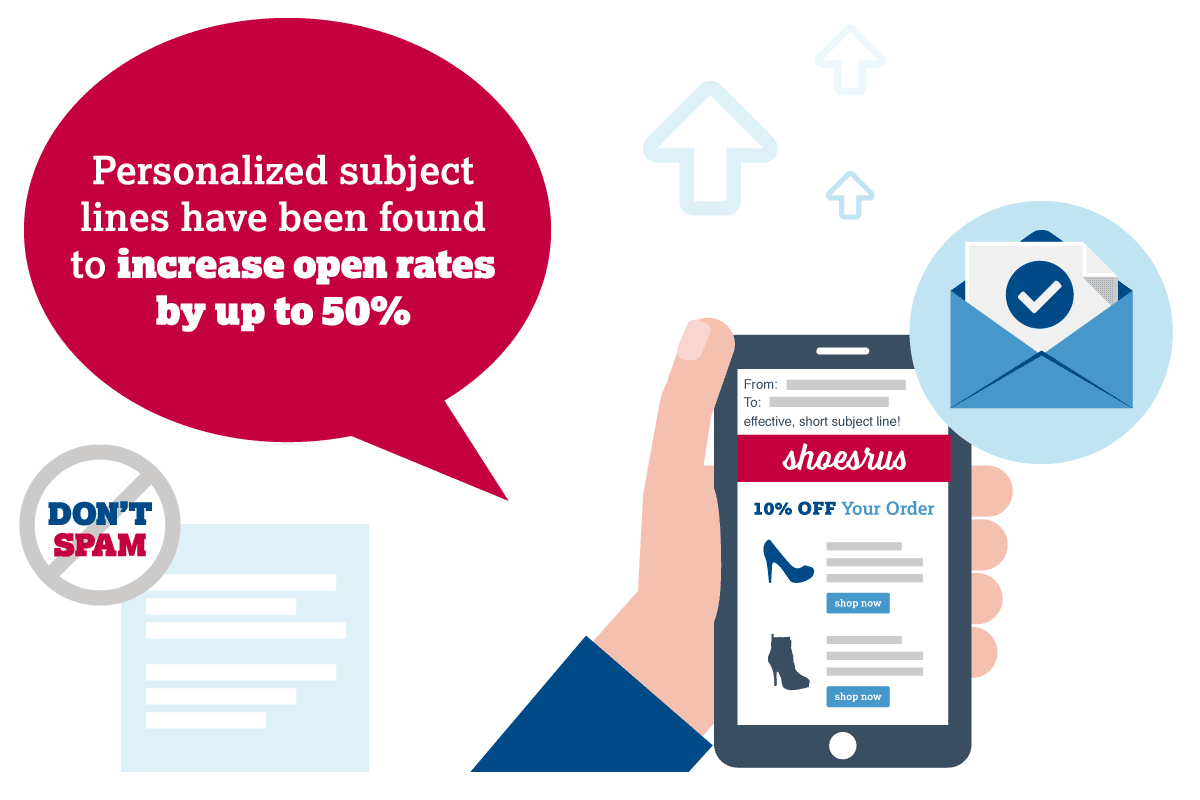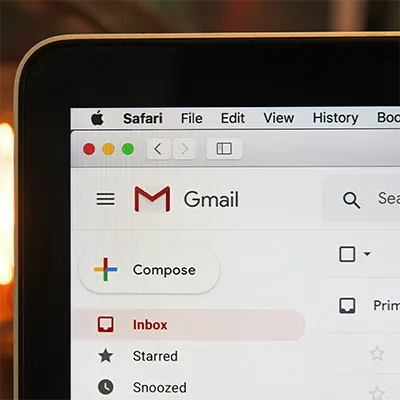How to Improve Your Email Marketing Performance

Email is a tried-and-true marketing method, but how do you know if your email marketing efforts are delivering the results they should? Here's how to measure your email marketing performance and 7 proven ways to get better results every time you hit "send."
The key metrics for email marketing include:
- Open rate: The percentage of people who open your email out of the total number of people who received it. Average: 34.20%
- Click-through rate (CTR): The percentage of people who click on a link or call to action in your email compared to the number of people who receive it. Average: 2.66%
- Unsubscribe rate: The percentage of subscribers who opt-out from receiving further emails from you. Average: 0.22%
- Hard Bounce rate: The percentage of sent emails that are permanently undeliverable. Average: 0.25%
These metrics depend on a wide range of factors, including industry, time of send, content, and other factors. Here’s what you can do to improve the performance of your email campaigns.
1. Optimize for Mobile

More than half of all emails are opened on mobile devices, so not optimizing your emails for mobile users is a fast way to alienate a huge part of your audience.
To ensure a good user experience for subscribers who open your emails on mobile devices, create your emails using a responsive template, use a simple font, reduce image file sizes, keep the content concise, and make buttons and phone numbers clickable and easy to read.
Before you send to your entire subscriber list, conduct test sends of your emails to different mobile platforms and devices to make sure everything looks and functions as it should.
2. Avoid Spam Filters
Spam filters were created to keep people from receiving emails they never asked to receive, but a lot of legitimate emails get caught up in them as well. According to ReturnPath, about 21% of legitimate emails are marked as spam and never reach the inbox.
The most important way to avoid ending up in the spam folder is to have permission to send emails—make sure you have a clear opt-in form when you collect emails, and don’t send emails to anyone who hasn’t expressly opted in or asked for them.
Don’t use deceptive or misleading subject lines—make sure the content of your email delivers what you promise in the subject line, and don’t use a subject line that makes it seem like the email is from a friend or coworker or refers to an order or urgent matter that doesn’t actually exist.
Run your email through a spam filter like IsNotSpam or the GlockApps Email Spam Tester before you send it to help flag any issues.
3. Use a Double Opt-In for Subscriptions
Many landing pages, websites, and welcome emails use a single opt-in form to get more email subscribers. With a single opt-in, new emails are added to the subscription list when some other action is taken, such as when an order is placed. In those cases, there may be a line informing the user that they will be added to a subscription list when they provide their email, as well as a check box that they can uncheck, but which is usually checked by default.
While the single opt-in is simpler and faster, you run the risk of adding people to your subscription list who didn’t realize they were signing up to receive emails, and therefore might later unsubscribe or even report your emails as spam.
To weed out people who signed up for your email without intending to, use a double opt-in for subscriptions, which basically asks subscribers to confirm their email address and subscription choice rather than just adding them after a single click.
4. Write Effective Subject Lines
Before you send, test your subject line. According to one report, 64% of email recipients decide whether to open or delete emails based on the subject line alone. Subject lines should clearly convey what value the recipient will receive by opening it, and ideally convey a sense of mystery or urgency.
There is no hard and fast rule about subject line length, other than that shorter (five words or less) is better for mobile users, so test to see what length works best for your email campaigns.
5. Clean Up Your Subscriber List
If you haven’t gone through your email recipient lists recently, you could be sending emails to invalid or inactive addresses or people who no longer want to receive them. To avoid hard bounces, perform an email purge to make sure all addresses are valid, and consider using a list scrub service to remove unengaged subscribers from your list.
To keep people from unsubscribing, marking your emails as spam, or simply ignoring them, send a friendly reminder email to ask subscribers if they still want to hear from you.
6. Create Triggered Campaigns
Trigger-based emails are sent automatically when a particular action is completed. Subscribing to an email newsletter could trigger a welcome email, a purchase could trigger a thank you email, or an abandoned shopping cart could trigger a follow-up offer to prompt them to complete the transaction.
Studies show that triggered emails have higher open rates and are exceptionally effective at increasing conversions and generating revenue
7. Get Personal
Personalized subject lines can increase open rates by 26% and boost clickthrough rates by 41%, so consider adding a personal greeting to a subject line. That doesn’t have the be the usual “Hi, [firstname]” greeting—you can personalize based on location, birthday, recent transactions, or any other data you have collected about the user.
You can also make your emails feel more personal by using an actual person’s name as the return email address (rather than noreply@), signing them with your name, and segmenting your list to target the specific interests and preferences of your audience with customized offers and content.


